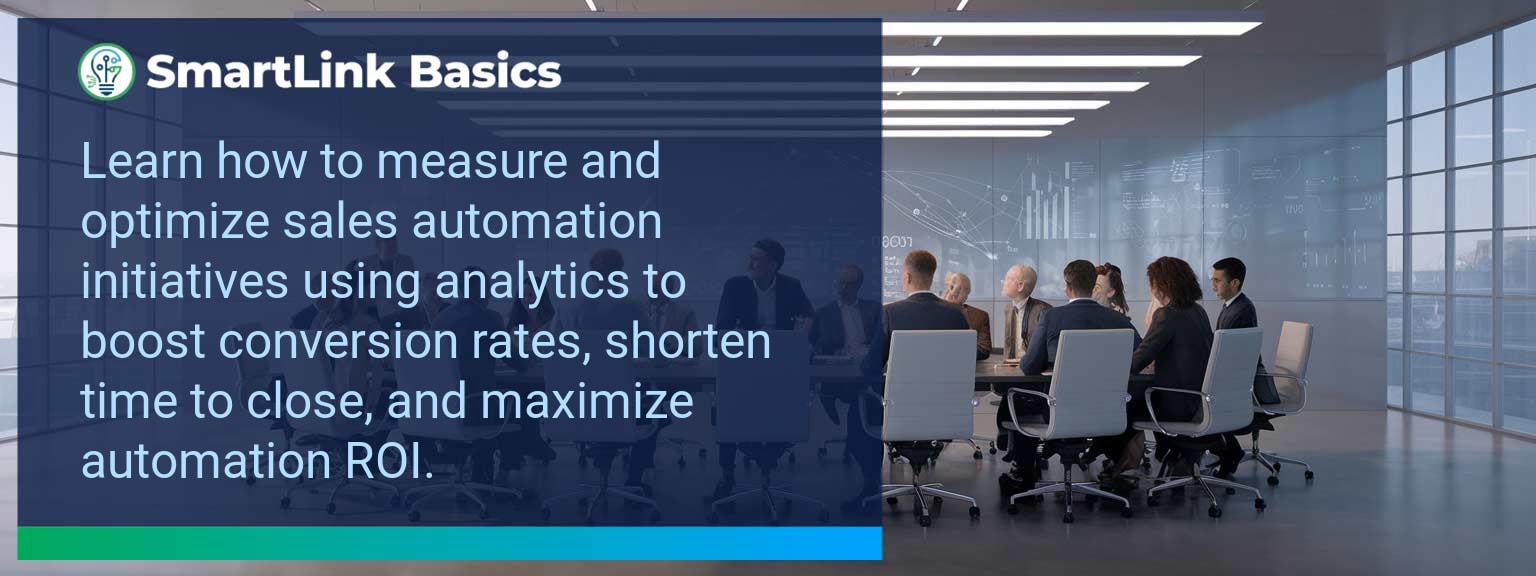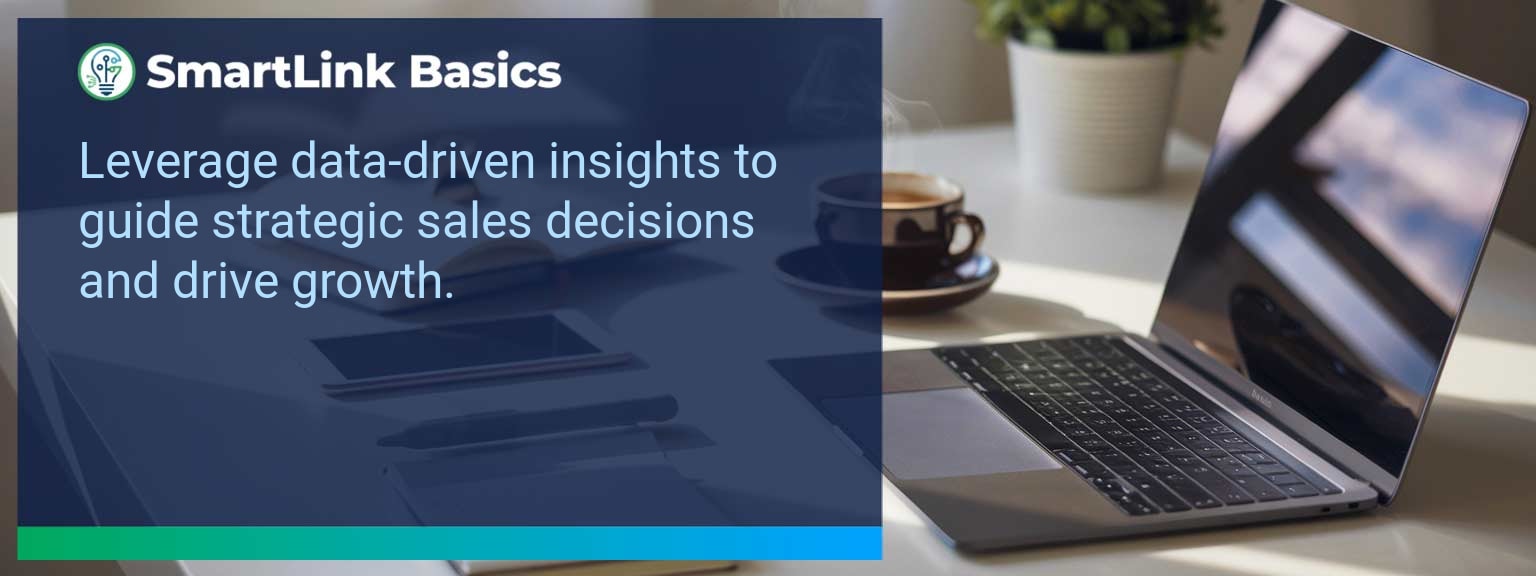Industry data shows that organizations adopting AI-driven automation achieve cost reductions of up to 30% while accelerating sales cycles by 20% or more (McKinsey, 2024). For sales leaders, AI automated workflows now define competitive advantage, enabling teams to reallocate time from repetitive tasks to high-value engagements. At SmartLink Basics, we help decision-makers implement these systems strategically, ensuring they integrate with existing revenue operations. In this article, you’ll see how AI automated workflows power business outcomes, the common obstacles that slow adoption, and practical steps to optimize processes. You’ll walk away with proven examples, a 90-day action blueprint, and measurable KPIs to track results.
- Automate repetitive administrative and CRM updates with AI.
- Integrate machine learning to personalize outreach at scale.
- Streamline approvals, quotes, and contract workflows for speed.
- Use predictive analytics to prioritize sales opportunities.
- Track adoption and performance with targeted metrics.
AI Automated Workflows: What Changed and Why It Matters
AI adoption has shifted from experimental to operational, making automated workflows a standard in high-performing sales organizations. The real advantage lies in combining workflow automation with artificial intelligence workflows to optimize every step of the revenue process. Sales leaders now use AI to synchronize touchpoints, reduce manual inputs, and ensure faster execution. For example, a B2B SaaS leader introduced automated lead enrichment and routing, cutting qualification time by 60%. Actionable insight: Audit processes for time-intensive handoffs and apply AI where repeatability is high.Redesign the Revenue Operating System With AI Automated Workflows
ICP, Segmentation, and Targeting AI-enabled segmentation uses historical wins, firmographic, and behavioral data to dynamically update ICP profiles. This ensures targeting precision without quarterly re-work. Pipeline Architecture Automated workflows push opportunities through the right stages based on engagement signals. AI flags at-risk deals for intervention. Plays and Messaging Integrated automation tools deliver personalized sequences based on buyer activity, increasing relevance at every touchpoint. Operating Cadence AI schedules follow-ups, forecast calls, and account reviews based on actual pipeline movement rather than static calendars. Actionable insight: Implement automation that adapts in real-time to both internal and buyer-driven events.Common Obstacles To Achieving Seamless Automation
The most frequent challenges are fragmented systems, inconsistent data quality, and cultural resistance. Without a unified data layer, automation amplifies errors rather than solving them. Coca-Cola Europacific Partners reported needing a full data governance upgrade before AI could improve sales workflows. Leaders must first assess infrastructure readiness and train teams to trust AI-influenced recommendations. Actionable insight: Before deployment, establish clean data practices and a single source of truth.Implementing AI To Optimize Workflows
Effective deployment of AI process optimization starts with mapping current-state processes, identifying friction points, and matching them with automation tools. For example, automating proposal generation based on CRM opportunity data can reduce turnaround from three days to one hour. Solutions combining business process automation platforms with machine learning integration enable continuous performance improvement. Actionable insight: Pilot in one high-impact stage, measure, and then expand.Tangible Benefits From Automated Processes
The benefits extend beyond time savings — sales leaders gain a scalable system. Tangible outcomes include faster quote-to-close, higher lead conversion, and better forecast accuracy. A manufacturing firm implemented AI-assisted order processing and cut errors by 40%, improving on-time delivery rates. Actionable insight: Track both speed and accuracy to measure workflow automation effectiveness.Metrics That Matter
| Category | Metric | Definition | Target |
|---|---|---|---|
| Leading | Workflow Completion Rate | % of automated sequences executed without manual intervention | 95%+ |
| Leading | AI Suggestion Adoption Rate | % of AI-generated action recommendations executed by reps | 80%+ |
| Lagging | Cycle Time Reduction | Decrease in time from lead entry to closed-won | 20%+ |
| Lagging | Revenue Per Rep | Average sales revenue generated per sales rep per quarter | +15% YoY |
| Quality | Automation Error Rate | % of workflows that trigger incorrect outcomes | <1% |
| Quality | Customer Satisfaction Post-Automation | Average CSAT score after automation implementation | ≥ 4.5/5 |
Innovations And Next Steps For AI Automation
Emerging capabilities like AI-generated playbooks, intent-driven dynamic routing, and integrated AR for virtual product demos are shaping the next wave of sales automation. Companies integrating these tools early will outpace competitors in speed and personalization. Actionable insight: Stay ahead by testing emerging automation features quarterly and aligning them with evolving buyer expectations.Get the 90-day plan, coaching rubric, and dashboard template to operationalize AI in your enablement program.
Turning AI Automation Into a Revenue Multiplier
AI automated workflows are now a strategic lever for predictable, scalable growth. This guide outlined current applications, adoption challenges, a 90-day execution plan, and measurable success criteria. To make automation pay off, sales leaders should integrate tools into one cohesive operating system and review results monthly for continuous improvement. Access more AI-driven sales enablement resources from SmartLink Basics to design a high-performance automation strategy. Clear direction and consistent accountability are the foundations of high-performing sales organizations. SmartLink Basics has found that when sales leaders combine transparent goals with disciplined follow-through, teams deliver sustained results. Sales Leadership Strategies matter now more than ever because shifting markets demand sharper execution and better use of talent. In this article, you will learn how to align your leadership approach with measurable outcomes, remove barriers to performance, and maintain momentum over time.- Set clear, measurable sales goals aligned to company objectives.
- Foster ownership by holding each team member accountable.
- Strengthen leadership presence through consistent coaching.
- Use data-driven reviews to track improvements and adjust strategies.
- Maintain long-term excellence with clear systems and cultural alignment.
Addressing Common Barriers To Sales Team Performance
Even strong sales leaders face recurring obstacles: unclear expectations, uneven accountability, and inconsistent coaching. These factors dilute both morale and performance. When a team lacks clarity on its objectives and expected behaviors, even talented salespeople can underperform. A common example is the misalignment between revenue targets and the daily activities measured. A manager might ask for more calls, but without linking those activities to qualified opportunities, effort is wasted. To overcome this, define both the end goals and the activity metrics that drive them. Ensure each salesperson sees how their role contributes directly to the bigger picture.Implementing Proven Leadership Practices For Growth
Effective sales leadership strategies start with consistent alignment between objectives, coaching, and measurement. Leaders must translate corporate revenue targets into specific, actionable expectations for individual contributors. Schedule structured 1:1 meetings that focus on reviewing pipeline health, skill gaps, and market conditions. Keep these sessions data-driven but human—balance analytics with motivational support. For example, a regional sales manager at a SaaS company implemented weekly pipeline velocity reviews, combined with targeted skill coaching, and increased close rates by 15% in one quarter. Actionable insight: Make each coaching session tied to both current performance barriers and future growth opportunities.Measuring Improvements In Sales And Motivation
Accountability requires measurable proof of progress. This involves leading indicators (forecasted opportunities, pipeline velocity), lagging indicators (closed revenue), and quality indicators (sales process compliance). Below is a streamlined reference for tracking results:| Category | Metric | Definition | Target |
|---|---|---|---|
| Leading | Pipeline Velocity | Rate at which opportunities move from creation to close | 15% increase in 90 days |
| Lagging | Closed-Won Revenue | Total revenue from successfully closed deals | Exceed quarterly target by 10% |
| Quality | Sales Process Compliance | Adherence to defined sales stages and activities | 95% adherence rate |
Sustaining Long-Term Leadership Excellence
Long-term success in sales leadership means embedding accountability into the team culture. This is achieved through consistent recognition, transparent communication, and structured routines. Leaders who revisit goals regularly, adjust strategies with agility, and model the behaviors they expect from their team keep motivation high even in challenging quarters. An effective approach is running quarterly business reviews not only with leadership but also in smaller peer groups among sales reps. This peer-level visibility increases accountability while fostering collaboration. Sustain momentum by documenting repeatable systems and training future leaders internally.Get the 90-day plan, coaching rubric, and dashboard template to operationalize AI in your enablement program.









